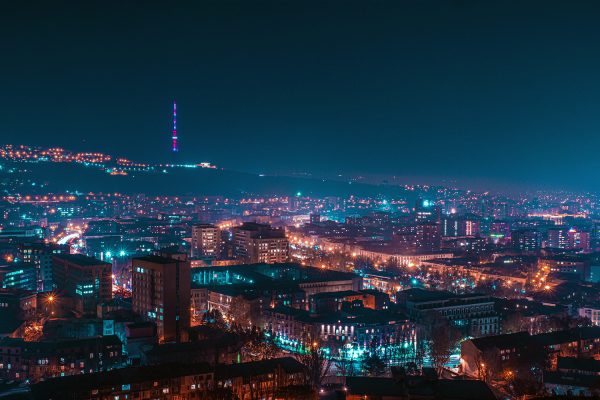
In what have been some of the worst clashes between Armenia and Azerbaijan in years, sixteen soldiers and one civilian were killed in the last two weeks. Armenia has threatened to bomb an Azerbaijani reservoir. Azerbaijan has threatened to destroy an Armenian nuclear plant. These may be empty threats, but they speak to the level of tension between the two countries.
What exactly happened, why, and what is the likely outcome?
What happened?
Armenia claims Azerbaijan initiated hostilities with an attempted drone strike against the town of Berd, north of Lake Sevan. Azerbaijan insists they were fired on first.
The fact that the conflict didn’t start in the disputed region of Karabakh gives credence to the Azerbaijanis.
As a member of the Collective Security Treaty Organization, Armenia could count on the support of Belarus, Kazakhstan, Russia, Tajikistan and Kyrgyzstan if it were attacked. However, Nagorno-Karabakh isn’t internationally recognized as part of its territory. Azerbaijan, which also claims the region, has staged provocations there in the past. Since the latest hostilities broke out farther north, it is more likely a case of Armenian brinksmanship gone wrong.
Why is this happening?
The conflict is related to Nagorno-Karabakh. In short, the region is occupied by Armenia but internationally recognized as belonging to Azerbaijan.
Both sides have reasonable claims to the territory, and both sides engage in unreasonable historical revisionism going back to the fourth century.
The most recent relevant date is 1923, when the Nagorno-Karabakh Autonomous Oblast was established within the Azerbaijani Soviet Republic. During the Soviet period, the dispute was largely moot. When the Soviet Union began to collapse, the majority-Armenian enclave declared its independence from Azerbaijan. Azerbaijan responded with a heavy hand, prompting Armenia to intervene. A full-scale war lasted two years. A ceasefire was signed in 1994. Armenia and Azerbaijan fought another, four-day war in 2016.
Is there a solution?
Some remain optimistic. The EU has been trying to reconcile the two parties by facilitating dialogue. However, European inconsistency on questions of self-determination and territorial integrity make it an imperfect mediator.
Even if the EU had more credibility and will, it might not accomplish much. The capture of Nagorno-Karabakh plays an important role in the Armenian national consciousness. It’s hardly less a matter of pride for Azerbaijan. Neither has shown a willingness to compromise on the issue. Both have been willing to fight for it — to the death.

The recent flareup appeared to have starred when an Azerbaijani military jeep drove towards an Armenian military post https://www.youtube.com/watch?v=Rb8uBuKVWEI and was warned off by the Armenians. The Azerbaijani soldiers exited the vehicle and ran. More Azerbaijani soldiers returned, and the fighting expanded. This Azerbaijani military incompetence resulted in the loss of a Major General and Colonel, scores of soldiers, a state-of-the-art Israeli Hermes 900 drone, and a Foreign Minister accused of pandering Armenians. Azerbaijan also jailed hundreds of opposition politicians and reporters.
The Armenians of Nagorno-Karabakh exercise full sovereignty over this region. Azerbaijan has land claims based on bizarre 1923 border policies of Joseph Stalin.
Yerevan, Armenia